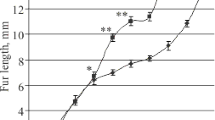Summary
A cell-free system from peripheral human leucocytes is described that can be stimulated with certain antigens. This cell-free system consists of DNA, of a pH-5-fraction and of ribosomes from peripheral human leucocytes. After stimulation, RNA synthesis is recorded in this cell-free system, followed by the synthesis of immunologically active proteins that can be classified as antibody.
The RNA synthesis is DNA dependent, since it does not occur in the absence of DNA and can be inhibited by actinomycin.
Ribosomes are not necessary for the RNA synthesis. The RNA isolated from an incomplete system (consisting of DNA and of a pH-5 fraction) after antigenic stimulation is capable of initiating antibody synthesis in a S-30 system treated with DNase. Therefore, it is designated as informative RNA.
The flow of information in the cell-free system was examined by use of the Gm and InV markers of the antibody synthesized under the influence of the informative RNA. A given informative RNA initiates the production of antibody that carry the Gm and InV markers of the DNA-donor cells. This is also the case if the informative RNA initiates antibody synthesis in a cell-free system consisting of a pH-5 fraction and of ribosomes derived from cells that have Gm and InV markers different from that of the DNA donor cell.
Antibody synthesized in the cell-free system are of different size. Immunologically active proteins with approximately the following sedimentation coefficients were found: 19s, 10 S, 7 S, 3 S and 2 S.
The two lightest immunologically active proteins can be considered subunits of antibody. However, their Gm and InV markers and their reaction with antisera oriented to IgG and IgM globulins does not suggest that they represent light and heavy chains.
The finding that certain immunologically active proteins react both with antisera oriented to IgG and IgM globulins is discussed.
Zusammenfassung
Es wird ein zellfreies System aus peripheren menschlichen Leukocyten beschrieben, welches durch bestimmte Antigene stimuliert werden kann. Dieses zellfreie System besteht aus DNS, pH-5-Fraktion und Ribosomen peripherer menschlicher Leukocyten. Nach der Stimulation beobachtet man in diesem zellfreien System eine RNS-Synthese und anschließend eine Synthese von immunologisch aktiven Proteinen, die sich als Antikörper klassifizieren lassen. Die RNS-Synthese ist DNS-abhängig, da aie in Abwesenheit der DNS nicht in Gang kommt und durch Actinomycin hemmbar ist. Ribosomen werden für die Synthese der RNS nicht benötigt. In der pH 5-Fraktion sind sämtliche Enzyme und Bausteine vorhanden, die für einen Aufbau der RNS benötigt werden. Die nach Stimulation mit einem Antigen aus einem inkompletten System (bestehend aus DNS und pH 5-Fraktion) isolierte RNS ist in der Lage, in einem mit DNase verdauten S 30-System Antikörper-Synthese in Gang zu bringen. Aus diesem Grunde wird sie als informatorische RNS bezeichnet. Anhand der Gm- und InV-Merkmale auf den durch die informatorische RNS synthetisierten Antikörpern konnte der Informationsfluß im zellfreien System verfolgt werden. Eine bestimmte informatorische RNS bringt auf den durch sie gebildeten Antikörpern stets die Gm- und InV-Merkmale zum Ausdruck, die den Merkmalen der DNS-Spenderzellen entsprechen. Dies ist auch dann der Fall, wenn die informatorische RNS Antikörper in zellfreien Systemen synthetisiert, die aus pH 5-Fraktion und Ribosomen von Zellen gewonnen wurden, deren Gm- und InV-Globulin Merkmale von denjenigen der DNS-Spenderzellen different sind.
Die im zellfreien System synthetisierten Antikörper haben unterschiedliche Molekülgröße. Es wurden immunologisch aktive Proteine mit folgenden Sedimentationskoeffizienten gefunden: 19 S, etwa 10 S, ca. 7 S, ca. 3 S, ca. 2 S. Die beiden leichtesten immunologisch aktiven Proteine können als Untereinheiten von Anti-körpern angesehen werden. Ihre Gm- und InV-Merkmale sowie ihre Reaktion mit Anti-Seren gegen die Globuline IgG und IgM sprechen jedoch nicht dafür, daß diese leichten Proteine schwere (H) und leichte (L) Ketten darstellen. Die Beobachtung, daß bestimmte immunologisch aktive Proteine gleichzeitig mit Antiseren gegen IgG- und IgM-Globulin reagieren, wird diskutiert.
Similar content being viewed by others
Literatur
Drescher, J., u.D. Jacherts: Antikörpersynthese in vitro III. Zbl. Bakt., I. Abt. Orig.199, 315 (1966).
Jacherts, D.: Antikörpersynthese in vitro I. Z. med. Mikrobiol. u. Immunol.152, 1 (1966).
—: Antikörpersynthese in vitro VI. Z. med. Mikrobiol. u. Immunol.152, 262 (1966).
—: Antikörpersynthese in vitro VII. Z. med. Mikrobiol. u. Immunol.153, 250 (1967).
—: Antikörpersynthese in vitro VIII. Z. med. Mikrobiol. u. Immunol.154, 112 (1968).
—, u.H. Noltenius: Antikörpersynthese in vitro V. Z. med. Mikrobiol. u. Immunol.152, 112 (1966).
Kirby, K. S.: Isolation and fractionation of nucleis acids. InDavidson, J. N., andCohn, W. E.: Progress in nucleic acid research and molecular biology, Vol. 3. New York-London: Academic Press 1964.
La Via, M. F., A. E. Vatter, W. S. Hammond, andP. V. Northup: The nature of polysomes isolated from spleen cells of rats stimulated by antigen. Proc. nat. Acad. Sci. (Wash.)57, 79 (1968).
Natwig, J. B., andH. G. Kunkel: Genetic markers of human immunoglobulins. Series Haematologica, Vol.I/1, p. 66 (1968).
Nakashima, Shoichi, Seigo Ohi, Kinji Tsukada, andHikokichi Oura: Polyribosomes in antibody-forming tissues of hyperimmunized rabbits. Biochim. biophys. Acta (Amst.)145, 671 (1967).
Pernis, B., G. Torrigiani, Luisa Amante, A. S. Kelus, andJ. J. Cebra: Identical allotypic markers of heavy polypeptide chains present in different immunoglobulin classes. Immunology14, 445 (1968).
de Petris, S.: Polyribosomes in thin sections of 5563 plasmacytoma cells. J. molec. Biol.23, 215 (1967).
Prokop, O., u.G. Bundschuh: Die Technik und die Bedeutung der Haptoglobuline und Gm-Gruppen in Klinik und Gerichtsmedizin. Berlin: W. de Gruyter 1963.
Ritter, H., u.K. H. Drescher: Bestimmungstechnik der Gammaglobulin-Polymorphismen Gm und InV. ärztl. Lab.10, 88 (1964).
Nomenclature for Human Immunoglobulins. Report of the World Health Organization Committee for the Nomenclature of Human Immunoglobulins. In: Molecular and cellular basis of antibody formation. Ed.Sterzl, J.,et al. Prague: Publishing House of the Czechoslovak Academy of Sciences 1965.
Williamson, A. R., andBrigitte A. Askonas: Biosynthesis of immunoglobulins: The separate classes of polyribosomes synthesizing heavy and light chains. J. molec. Biol.23, 201 (1967).
Author information
Authors and Affiliations
Rights and permissions
About this article
Cite this article
Jacherts, D. Antikörpersynthese in vitro. Z. med. Mikrobiol. u. Immunol. 154, 245–266 (1968). https://doi.org/10.1007/BF02123137
Received:
Issue Date:
DOI: https://doi.org/10.1007/BF02123137




